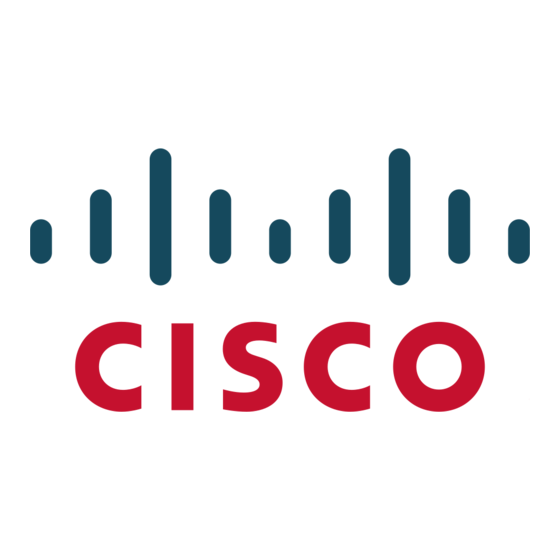Cisco AS5850 Manuale di installazione dell'hardware - Pagina 12
Sfoglia online o scarica il pdf Manuale di installazione dell'hardware per Porta d'ingresso Cisco AS5850. Cisco AS5850 30. Universal gateways
Anche per Cisco AS5850: Manuale di riferimento rapido (38 pagine)

Cisco AS5850 Chassis
If you need to OIR the RSC serving as the primary clock source with a split backplane configuration,
Note
you will need to switch the primary clock source to the other RSC as described in Chapter 4,
"Maintenance" in the Cisco AS5850 Operations, Administration, Maintenance, and Provisioning
Guide, available online at:
http://www.cisco.com/univercd/cc/td/doc/product/access/acs_serv/as5850/sw_conf/5850oamp/
index.htm
OIR Events
Split backplane configurations are managed by having the slots that are owned by one RSC appearing to
the other RSC as empty slots. An RSC is informed of OIR events by messages that are sent to the RSC
when a card is inserted in or removed from a slot. An RSC sends messages only for OIR events that occur
in slots that it owns. The packet switch on each RSC is configured to ignore traffic from cards in
un-owned slots.
Card Bootup
When a feature card starts running, it sends a message to the RSCs. The RSCs determine whether they
are the master for that slot. Only the RSC that owns the slot containing the feature card responds to the
message. The feature card accepts firmware and a bootstrap image from that RSC and configures itself
to communicate through that RSC. The first time an RSC is inserted, it sends an inventory request
indicating that all feature cards should be reloaded. In split backplane mode, the final feature card image
is downloaded by each card from the RSC that owns it.
Slot Ownership Arbitration
The Cisco AS5850 operates in a default split backplane mode. Currently, the RSC in slot 6 automatically
owns all cards in slots 0 through 5, and does not receive inventory messages from cards present in slots
8 through 13. The RSC in slot 7 automatically owns all cards in slots 8 through 13, and does not receive
inventory messages from cards present in slots 0 through 5.
TDM Resource Allocation
The various kinds of feature cards (FCs) that can be placed in the chassis connect to one another using
Time-Division Multiplexing (TDM) buses in the chassis backplane. The Cisco AS5850 has a total of 4
such buses, each bus supports 2048 DS0s, giving the backplane a total DS0 capacity of 8192 (numbered
from 0 to 8191).
The TDM management software on each of the RSCs controls the allocation of the backplane DS0s.
Allocation starts with the fourth (i.e. last) backplane bus and finishes with the first. Allocation will only
move onto a new backplane bus when all the DS0s on the currently-used backplane bus are in use. Within
a given bus, allocation begins at the lowest DS0 and progresses to the highest DS0. Once a DS0 has been
allocated, used and released, it is put back onto the end of a queue of DS0s for the bus to which it
belongs. Thus, a DS0 will only be re-used when all the other free DS0s on its backplane bus have been
used. After a long period of operation, the ordering of DS0s within a particular DS0 queue will
effectively be random.
Cisco AS5850 Universal Gateway Hardware Installation Guide
1-12
Chapter 1
Cisco AS5850 Product Overview
78-10573-06 0A
